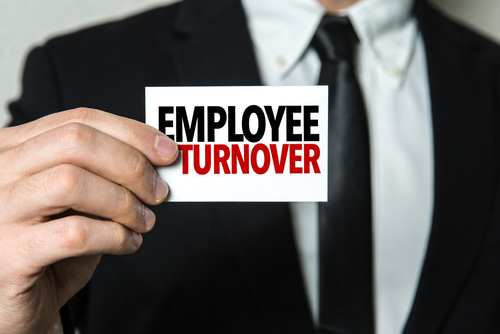In the current economic landscape, where unemployment rates are at their lowest in decades, an intriguing paradox has emerged, and we’re experiencing an unexpected trend: Employees are staying put. Employees across industries are choosing to remain in their jobs, not out of a profound love for their work or unwavering loyalty to their employers but largely because of fear of unemployment amid the rising cost of living and the struggle many employees are facing in maintaining their lifestyle amid rising interest rates and fears of a looming recession.
While this may initially seem positive for employers, the consequences are far from ideal. This article delves into the impact of this phenomenon on employee behavior and its ramifications for companies, offering proactive strategies to navigate these challenging waters.
The Current Landscape
According to the U.S. Department of Commerce, the United States is experiencing its lowest unemployment in over 50 years. Despite this seemingly favorable employee-driven environment, employees are choosing job security over job satisfaction, resulting in a slew of repercussions. According to Gallup’s State of the Global Workplace report, only 23% of employees worldwide are engaged in their jobs, with over half of the respondents worldwide stating they aren’t engaged at work and are doing the bare minimum to meet their job requirements.
Low Employee Engagement
Extensive research in the field of organizational psychology and management has established a direct link between low employee engagement and reduced company performance. This sobering fact has never been more relevant. Employees who feel stuck in their jobs due to external market conditions are unlikely to be fully engaged in their work. Their lack of enthusiasm and motivation translates into lower productivity, decreased creativity and innovation, and higher absenteeism and presenteeism* rates. This lack of engagement ultimately undermines overall company performance and success.
The Contagion of Unhappiness
Employee unhappiness can be contagious in an organization. Employees’ desire for job security during this period of financial instability is compelling some employees to stay in roles they dislike, doing work that’s unfulfilling for companies they no longer feel connected to. This trend is creating a toxic atmosphere that affects the morale and productivity of their “happier” colleagues. Research conducted by Harvard Business Review suggests that unhappy employees who don’t leave a company can spread their negativity to coworkers, leading to a decrease in overall job satisfaction and engagement. As unhappy employees interact with their peers, they can influence the attitudes and behaviors of those around them. This ripple effect can harm teamwork, collaboration, and innovation, ultimately undermining the company’s performance and culture.
Culture and Performance Implications
Beyond engagement and contagion, employees who stay in their job way past their natural expiration date have profound implications for a company’s culture and overall performance.
Employees who remain in their roles without genuine passion for their work are less likely to contribute innovative ideas or challenge the status quo, which can hinder an organization’s ability to adapt and grow. Additionally, a workforce that remains unchanged for extended periods may become stagnant, resisting change and ultimately preventing the company from evolving to meet new challenges.
What Can Companies Do?
To counteract the negative impacts of the low turnover trend, companies must adopt a proactive approach to mitigate the negative consequences. Here are some actionable strategies to consider:
Comprehensive Employee Surveys
Conducting regular employee engagement surveys to gauge employee sentiment is the key to proactively addressing performance consequences. Aggregated data for all employees may or may not guide you to better understanding where the trouble resides. Analyze the data by tenure, gender, team, and job level to identify the real trends. Pinpoint areas where engagement is lacking, and tailor interventions accordingly.
Talent Management Review
Perform a thorough talent management review of all employees at all levels at least once a year but preferably more often. Evaluate them against criteria like impact, leadership, and demonstrated alignment with company values. This assessment will identify the highest-impact employees who warrant special attention and investment. These employees are drivers of performance and ambassadors of the company culture. Their influence among their peers is priceless.
Individualized Development Plans
Invest in the development of all employees by creating development plans aligned with their personal and professional goals. Nourishing employee motivations and aspirations through investment in their career development will inevitably foster a greater sense of purpose, professional fulfillment, and company connection.
Reward and Recognize High-Impact Employees
In this tight labor market, it’s more important than ever to retain high-impact employees. While every employee vacancy results in a temporary loss of productivity, the vacancy created by the loss of a high-impact employee is multiplied tenfold. In a market defined by talent shortages for critical roles, the ability to replace exceptional talent quickly is more challenging, thereby creating a more significant impact on overall performance. Investing in meaningful recognition and reward programs to acknowledge high-impact employees’ contributions is critical to reinforcing their commitment to the organization, encouraging their continued level of exceptional performance, and setting an example for others.
The current market conditions have triggered a unique set of challenges for companies as employees opt for job security over job satisfaction. This shift in behavior can lead to low employee engagement, the contagion of unhappiness, and adverse effects on company culture and performance. To counteract these challenges, companies must proactively survey employees, evaluate the state of their talent regularly, create individualized development plans, and invest meaningfully in their highest-impact employees. By doing so, organizations can navigate these turbulent waters and foster a resilient and engaged workforce, even in the face of a tight labor market.
As principal at Kim Tabac Human Resources, Kim Tabac has over 25 years’ experience designing people and culture strategies across various industries. Before launching her own company, she was CPO at League Inc. and, before that, was partner and CTO at Deloitte Canada. She’s currently a CHRO and an executive in residence at MaRS Momentum. For more information on Tabac, visit www.kimtabachr.com or LinkedIn.

